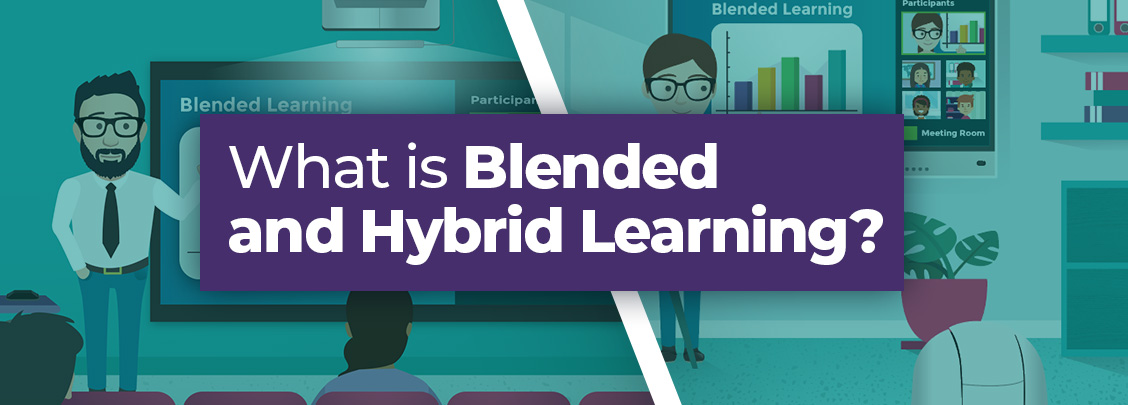What is Blended and Hybrid Learning?
Blended learning is the combination of traditional face-to-face teaching in a brick-and-mortar classroom, with new, remote teaching based in an online classroom.
This is often confused with hybrid learning which is more focused on bridging the gap of in-classroom and at home learning. Classes are delivered simultaneously to students regardless of their location.
Whilst blended learning reaps all the benefits of hybrid learning, it takes it one step further with lessons recorded and saved with a pool of online learning resources, empowering students to learn not only where they want to, but also when they want to.
Benefits of Blended Learning
The main benefit of blended learning is that is gives schools flexibility to disperse their students when they need to. During 2020 and 2021, this was the main advantage of this teaching style. Schools were able to carry on providing an education to their students, whist significantly reducing the risk of Covid-19 contamination.
That is not to say that blended learning will disappear once the coronavirus pandemic is history, there are many other benefits of this teaching style:
- Teachers are able to teach multiple classes at once and aren’t restricted to the physical space of classrooms.
- Technology allows for lesson reports and analytics, that aren’t available when technology isn’t used.
- Lesson preparation takes less time as they can be saved and easily tweaked for different classes.
- Student engagement and other insights can be monitored.
- Schools become more environmentally friendly, as less printed materials are used in classes.
- Students have better attitudes towards school, as they are more in control of when and where they learn.
- Marketing and grading schoolwork can be automated, saving time and reducing the room for errors.
EdTech in Blended Learning
“EdTech should be seen as an inseparable thread woven throughout the processes of teaching and learning. It’s senseless to pretend it isn’t something that every teacher and every learner uses, every day.” - Dominic Norrish, Group Director of Technology, United Learning Trust
Technology, when used properly, can support teaching and help the daily running of schools and other education institutions. It also has the potential to break down demographical barriers to help provide world-class education, training and care for everyone, whatever their background.
Embedded in everyday society, technology also boosts student engagement as it brings learning to a platform they understand and regularly engage with. As digital natives, most young people have their own smartphone or tablet which they use on a daily basis. Despite this, education is rarely fully integrated and is highly variable from teacher to teacher.
Not only does technology in education simplify learning for student, but it simplifies teaching as well. Widespread technology allows for the simplifying and automation of tasks and processes, it improves collaboration, it heightens access to information, and it allows for easy data collection and analysis.
However, Edtech doesn’t just refer to the physical hardware in the classroom. It also includes network infrastructure that allows for fast connection speed and quick cloud access. Without this, teachers will struggle to stream video content seamlessly and work collaboratively in real-time with their students. By embracing cloud technology, information and services to be stored, maintained and managed remotely through the internet rather than on a local hard drive or an on-site server.
